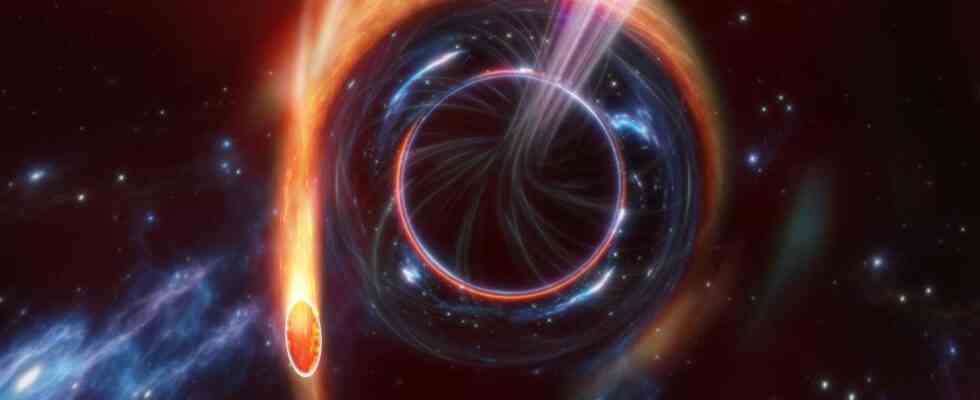It all started on February 11, 2022, at exactly 11:42:40 a.m. (Paris time). It was still dark in California on Mount Palomar, where several telescopes are installed. One of them is equipped with a camera that scans the sky with a fairly wide field of view, looking for what astronomers call transient events (comets, asteroids but also star explosions, etc. ). And, on this winter’s day, this facility called the “Zwicky Transient Facility” (ZTF) sees a light in the firmament that was not there before. As announced on Wednesday 30 November, two international studies – one published in Nature and the other in Nature Astronomy –this light is the index of an event as distant as it is rare: the tearing of a star by a giant black hole near which it had the imprudence to pass.
Written like this, it all seems simple, but, before arriving at this conclusion, astrophysicists had to follow a long journey that Susanna Vergani, CNRS research director at the Paris Observatory and co-signatory of the study of Nature : “When the ZTF scans the sky, it compares it with the previous one to detect transient sources. Many are found every night and the whole game is to understand the cause of each variation. As we have developed automatic tools for this, this preliminary analysis is done very quickly and the information is then disseminated in an international network of researchers. »
When the behavior of a light source seems particularly interesting, the astronomical community mobilizes to carry out a range of complementary observations at different wavelengths. In the case of the February 11 event, dubbed AT 2022cmc, a total of twenty-one telescopes were aimed at the source. “The idea is to then put all the observations together and try to understand what it is”, emphasizes Susanna Vergani. The first hypothesis involved a gamma-ray burst, which betrays the transformation of a dying star into a black hole or a neutron star, a cataclysmic event that sends a considerable amount of energy into space. But this scenario did not fit with the observations.
Accretion Disk
“The best interpretation involves a phenomenon known as a tidal rupture event., tidal disruption event (TDE) in English, explains Susanna Vergani. A star is torn apart by the gravity of a giant black hole it has approached. » The force of attraction of the black hole literally tears material from the star, just as the sleeve of a shirt tears when you pull too hard on it. This material then begins to revolve around the black hole in what specialists call an accretion disk.
You have 37.47% of this article left to read. The following is for subscribers only.

